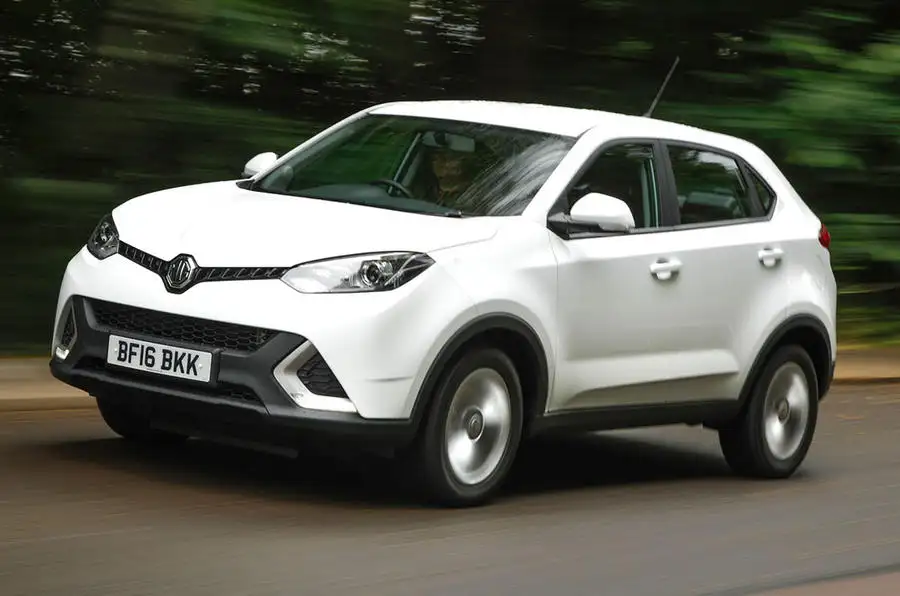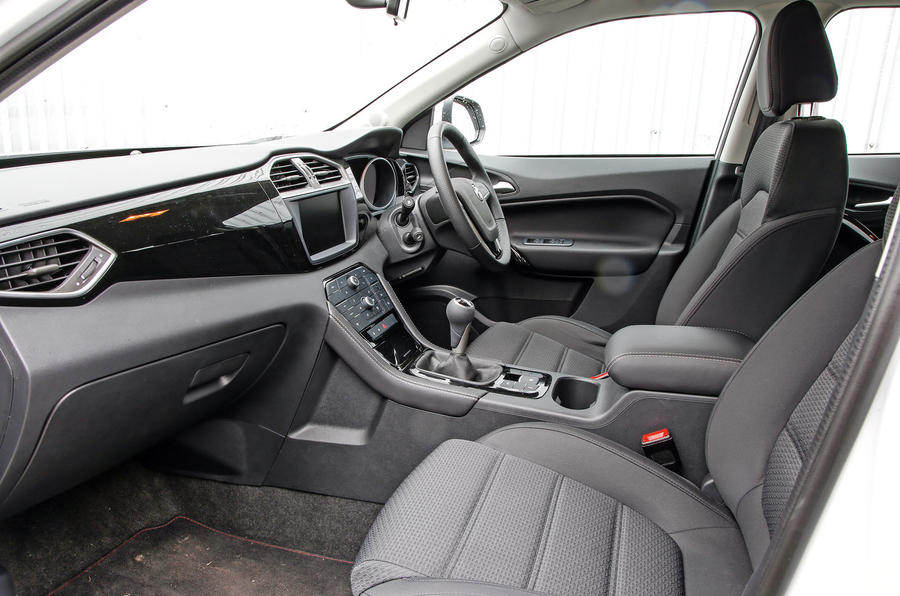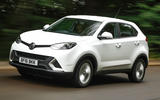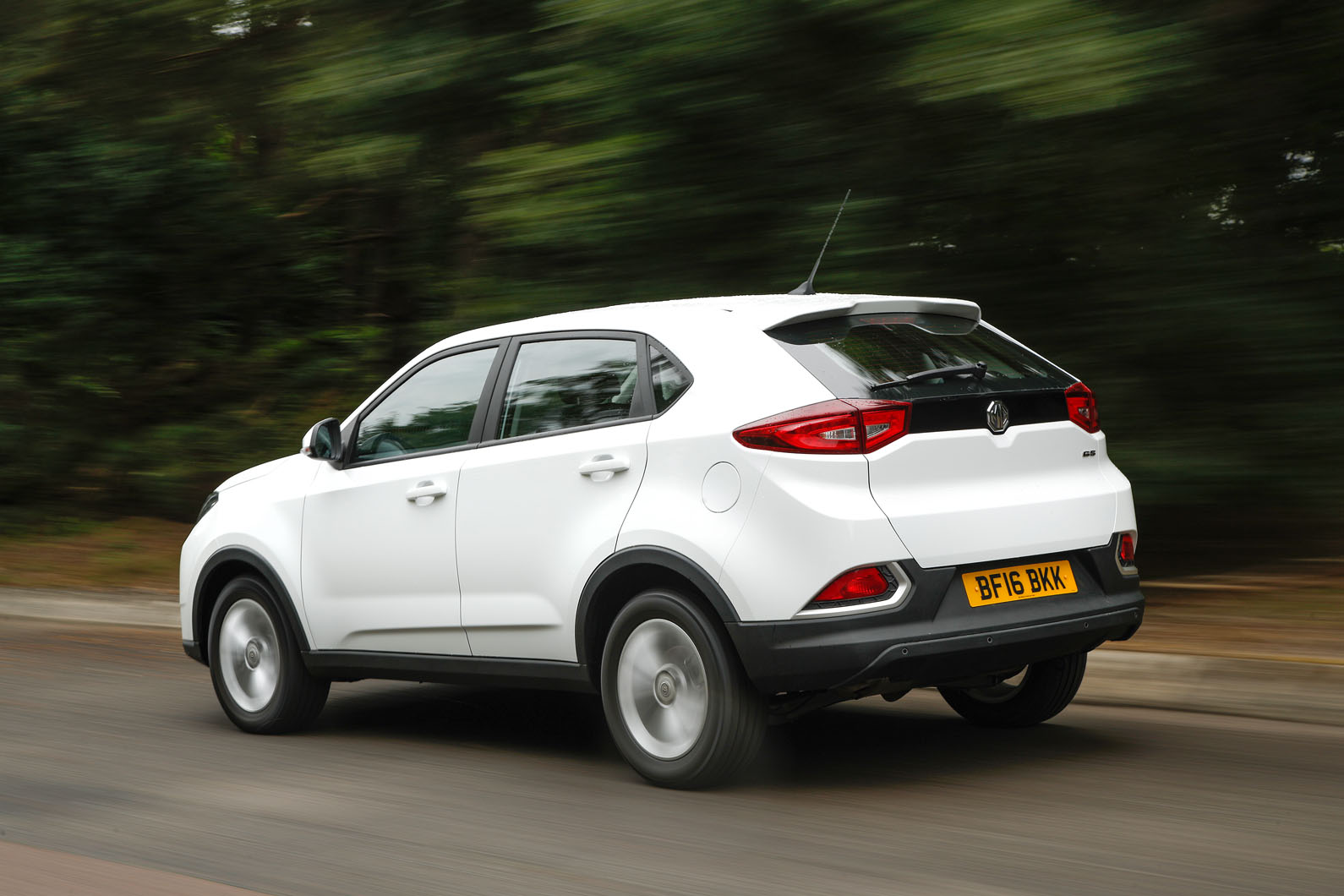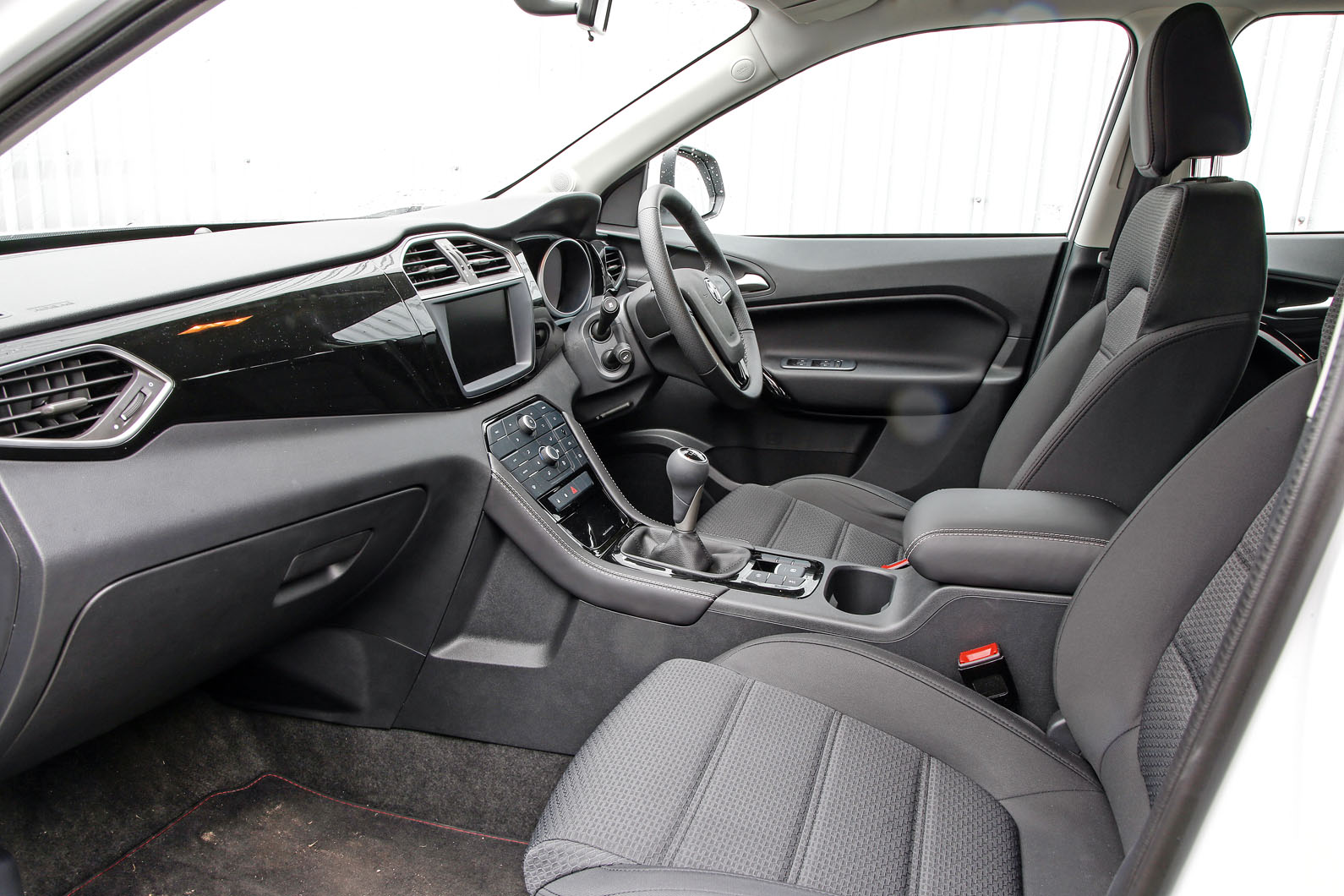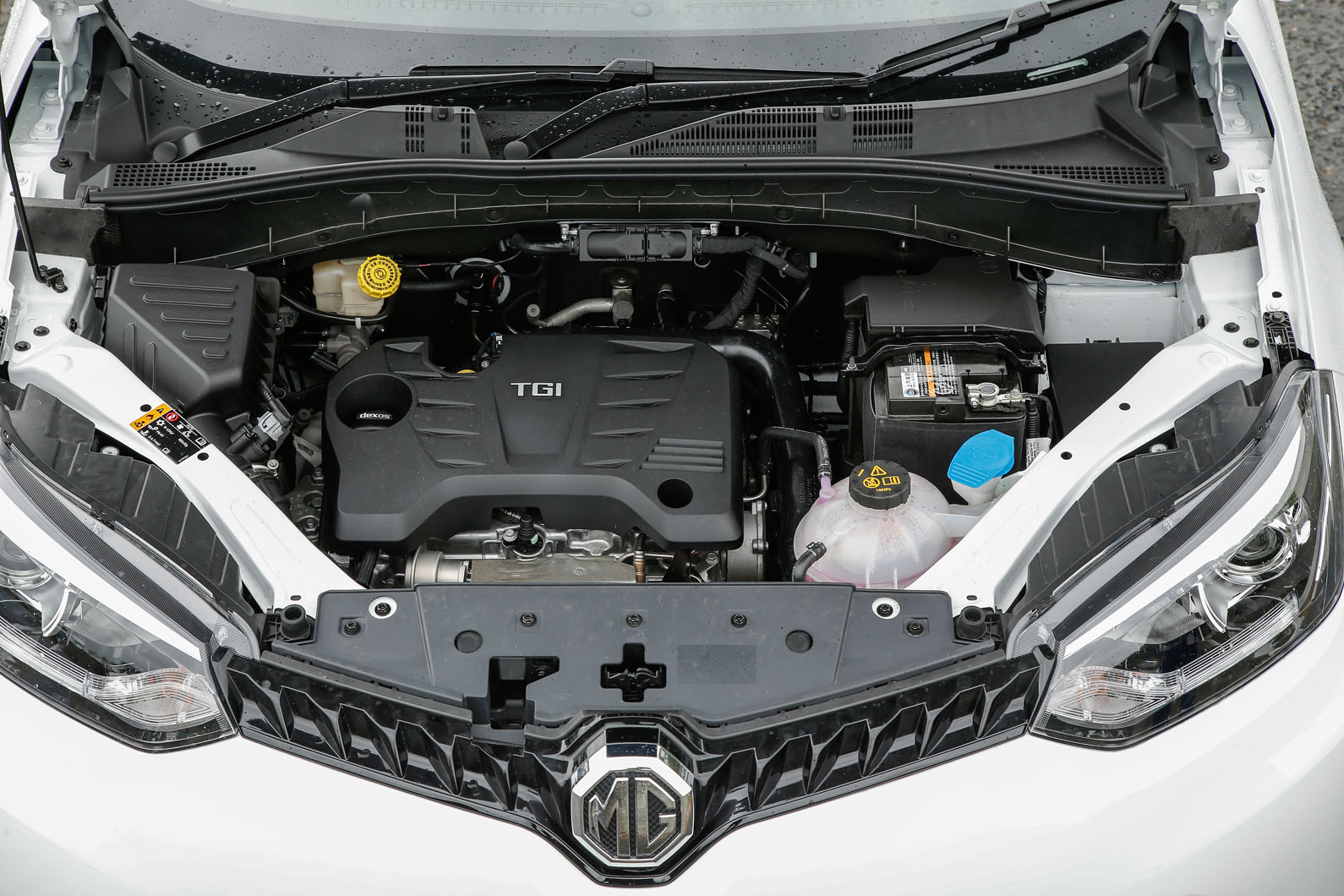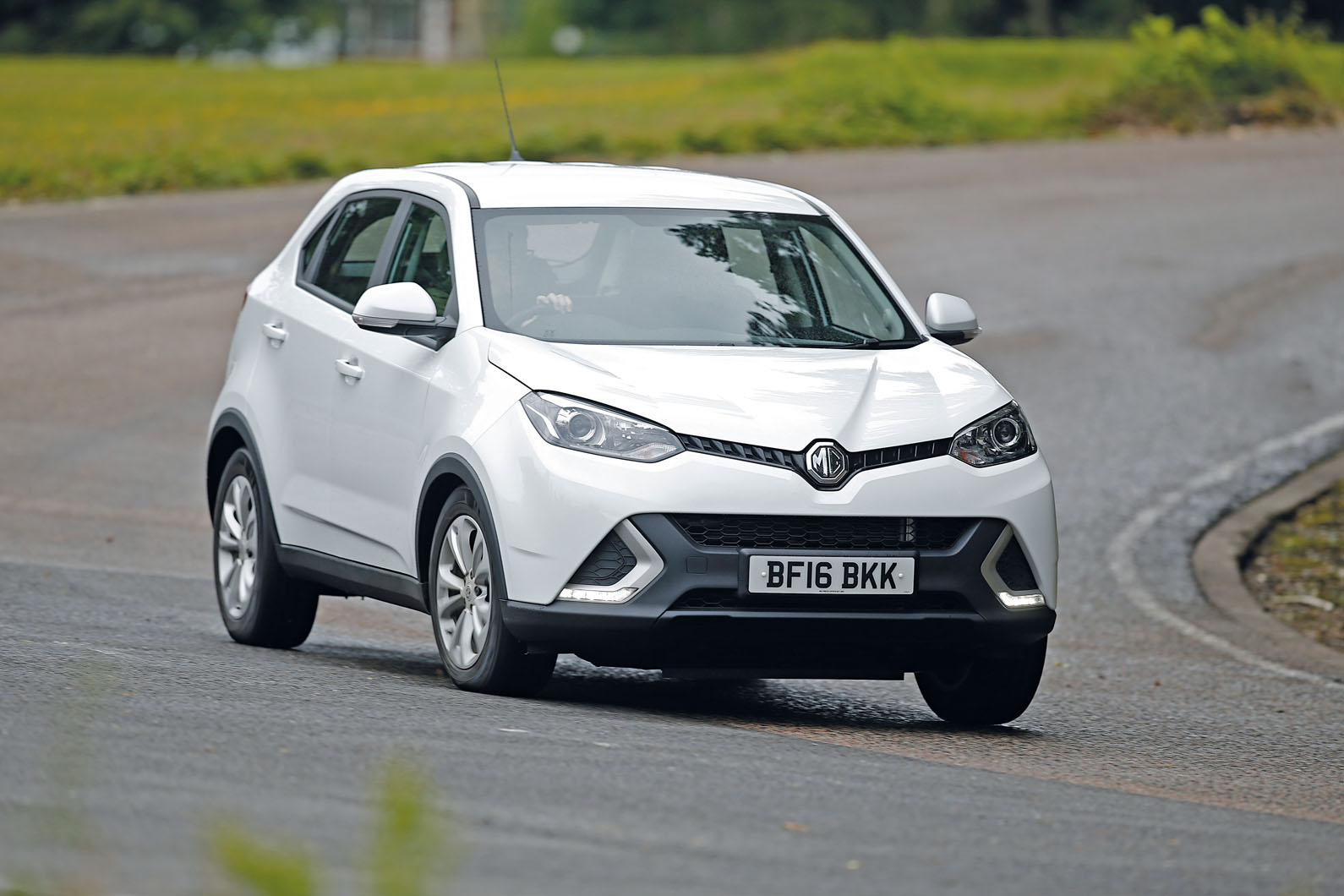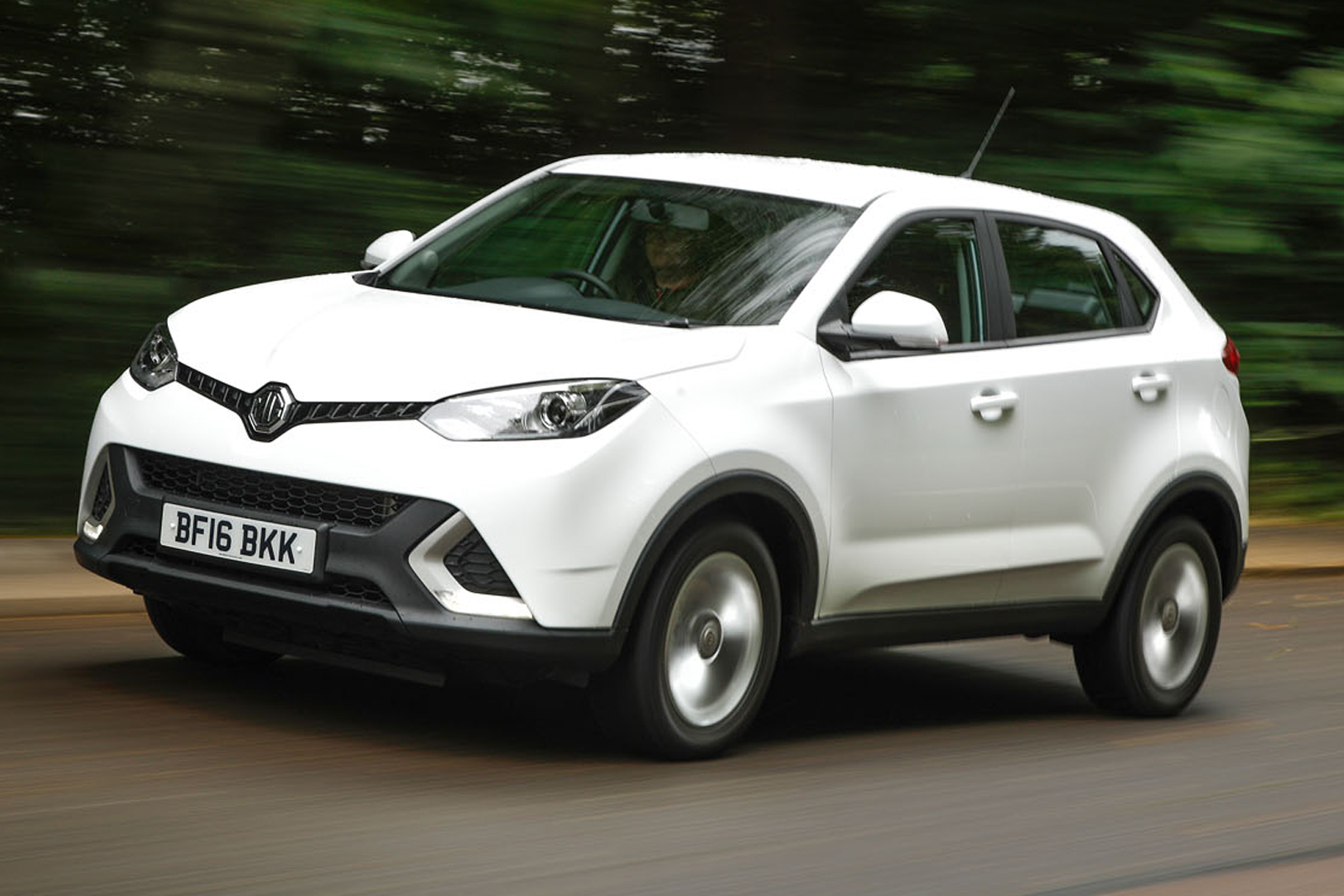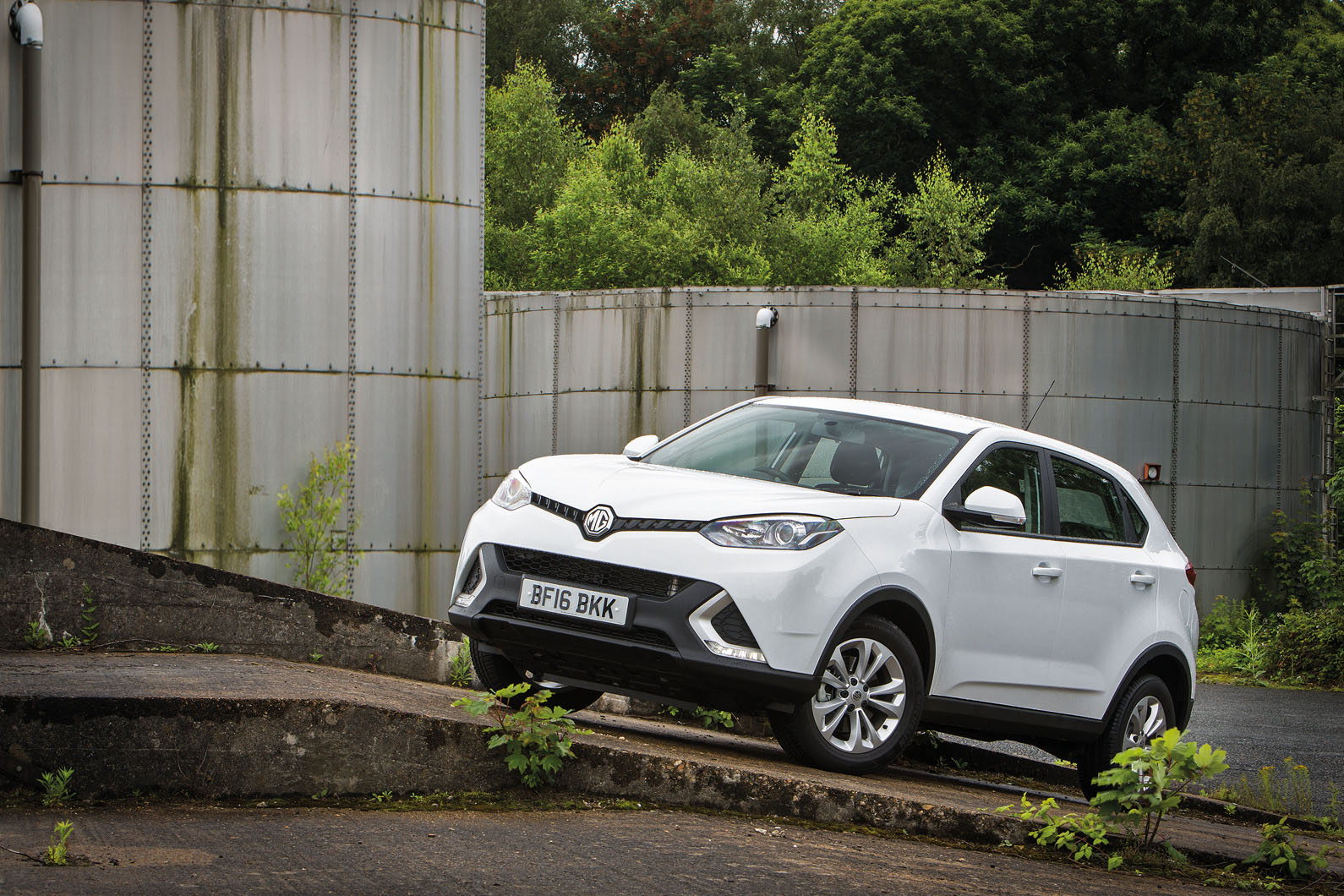MG improved its cabin quality significantly somewhere between the time the 2011 MG 6 was designed and when the 3 that followed it was made.
The GS’s cabin doesn’t represent quite as much progress – partly because the comparison with what came immediately before isn’t so stark.
Overall, this is only a partly successful effort at matching the material sophistication and fit and finish of a European crossover, although it’s a better one at levelling with its more expensive rivals on comfort, equipment and practicality.
The GS perches you upright in a broadly comfortable driver’s seat. Our mid-spec test car came with cloth upholstery, which looked and felt passably attractive but wasn’t very grippy.
Combined with a flat seat cushion, we found the seats slippery enough to allow their occupants to slide forwards during hard braking – a minor and unusual observation, but one worth noting.
The dashboard is clad in grained moulded plastic that lacks a soft-touch finish anywhere.
MG makes a token effort at compensating for it by fitting fillets of leather to the outer edges of the centre console, but it’s an ineffective gesture, because the places where your hands and elbows regularly come to rest (with the exception of the leather-faced controls) all feel hard.
Cheap-feeling fixtures and fittings abound – the seat adjuster levers offend notably and the column stalks are rubbery and imprecisely finished.
The gloss black foil on the dashboard panel and around the centre stack and gearlever consoles does add a note of decorative richness that neither the MG 6 nor 3 had, however, while the satin chrome trims around the car’s air vents and instruments are nicely executed.
Passenger space is a predictable selling point for the GS. You’ll find 30mm more head room and 70mm more leg room in the back seats than in a rival typical of what is available at the same price, namely the Suzuki Vitara.
That’s probably the difference between the space for a larger adult passenger to get comfortable or not.
Boot space beats that of the Suzuki by a fairly wide margin on loading length, although it’s slightly shallower and narrower.
But credit is due to MG for adding to the GS’s practicality with back seats that split 60/40, adjust for backrest angle and fold down completely flat.
The base model GS gets a 6.0in touchscreen infotainment system with a radio and aux-in and USB inputs — but it does without Bluetooth.
We’d question the wisdom of omitting the latter when it can clearly now be considered a safety feature and will be among many shoppers’ basic requirements.
Opt for a mid-spec Excite model —like our test car — and you’ll end up with plenty more for your money: a larger touchscreen, a DAB tuner, Bluetooth, MirrorLink for Android and Symbian smartphones and a reversing camera.
You don’t get fitted navigation until you hit full-house trim, but even so, there are rivals costing several thousand pounds more that don’t match that level of equipment.
The lack of a compatible phone prevented us from testing the system’s MirrorLink functionality, but its Bluetooth connection was mostly reliable and its audio output clear and powerful enough.
Graphically, the system looks a bit basic and its menus aren’t as intuitive as they might be. But, assuming the MirrorLink functionality works well, it should be a strong selling point at the car’s sub-£18,000 price.


